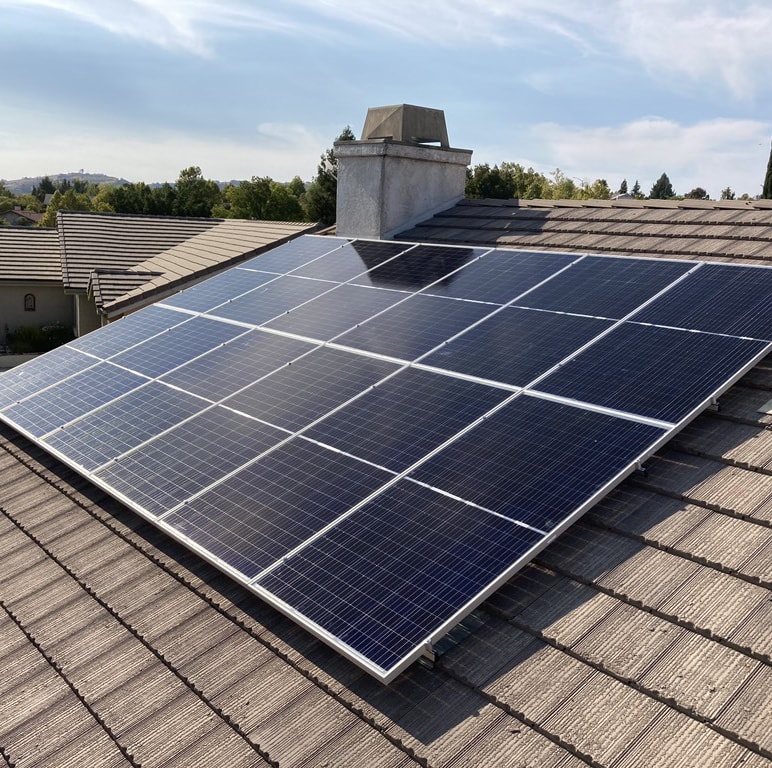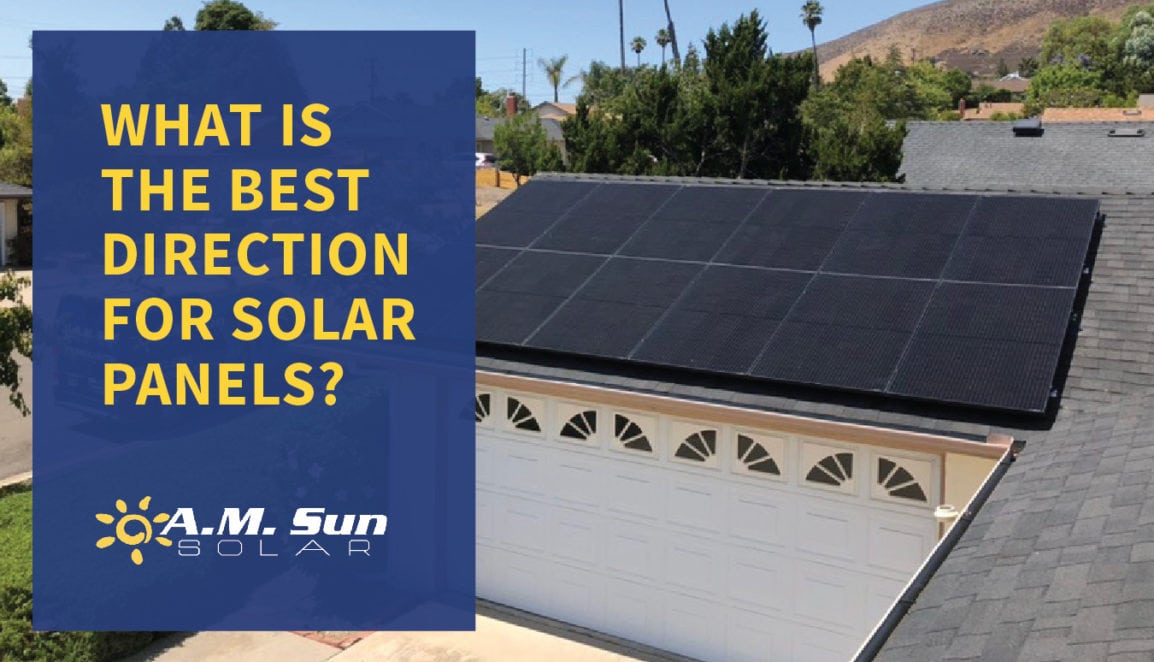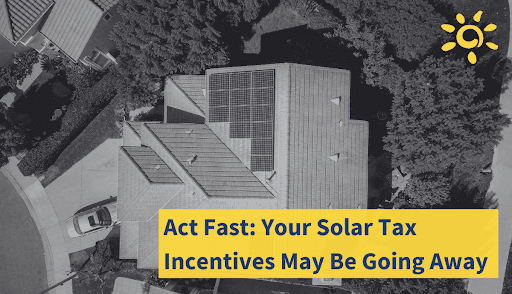There is a lot to consider when you are in the market to purchase or lease a solar energy system for your home or business.
It is important to consider the directionality of your roof. The face of your roof, where a solar system can be installed, is a main determinant of how many panels are needed, what size, and how well the system will function on your rooftop. The direction the panels face can also be a major factor in the overall amount of energy your rooftop solar system can produce over its lifetime.
A best practice at A.M. Sun Solar is to position panels with the majority south-facing. On the Central Coast, the sun is always along the southern part of the sky, so your system will get the maximum sun exposure in a day.

Additionally, it is important to understand that to produce the most energy in a day, south-facing panels need to be tilted between a 30 and 40-degree angle. This will ensure sunlight hits your solar panels perpendicularly where efficiency is maximized. PV solar panels need to be positioned correctly in relation to the sun so they can generate direct current (DC) electricity. From there, DC electricity can be converted into usable alternating current (AC) energy that our homes and the electrical grid uses through the power of an inverter.
This angle also aids in preventing dirt from building up on top of solar panels in the dry summer months on the Central Coast. Summer dirt buildup can decrease solar energy production by 30%. Depending on the type of roof you have, A.M. Sun Solar offers different mounting systems to help position your solar modules so that they can produce at their best.
To counteract PG&E’s time-of-use (TOU) rates, the addition of west-facing panels might be advantageous. On the Central Coast, the highest time of use rate is in the late afternoon when most people are in their homes utilizing electricity for various power needs. If you have west-facing solar panels, you’re able to capture and produce your own energy during PG&E’s most expensive rates of the day. If you do not have enough roof facings to accommodate maximum power generation over the course of the day, A.M. Sun Solar advises the installation of a solar power battery such as a Tesla Powerwall or Enphase Encharge. With an added battery, you can store energy during the hours when your solar panels are producing the greatest amount. Use that stored energy from your battery back-up system when you want to avoid those high PG&E rates.
At A.M. Sun Solar, we strive to stay up to date on best solar practices and keep you current on what’s to come in the utility and energy sector. If solar is something you want to learn more about, schedule a free Home Energy Evaluation with us! We would love to advise you on a custom solar solution to save you more money. We are the Central Coast’s leading local solar provider and are here to help navigate the many different options for solar system sizing, positioning, and saving.


